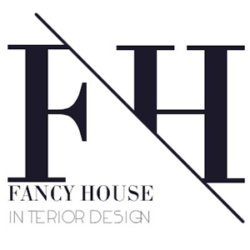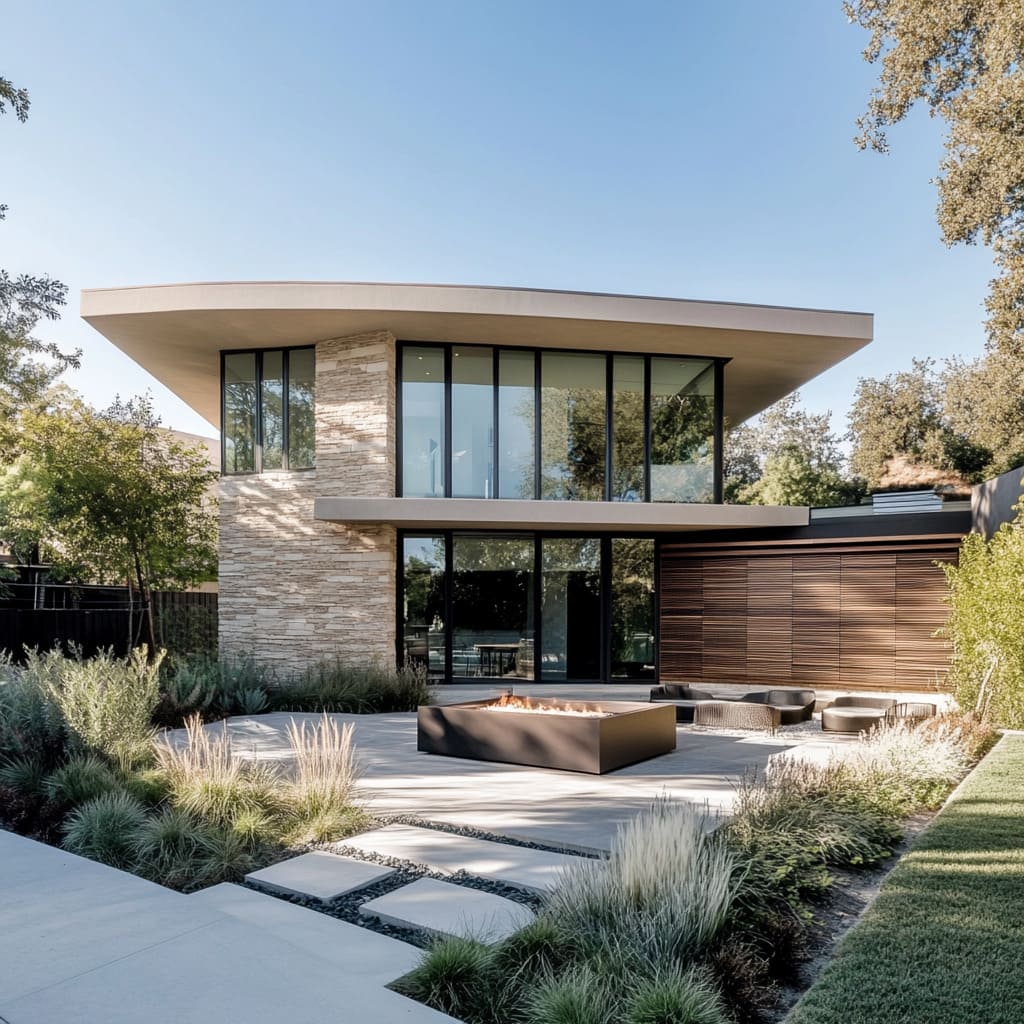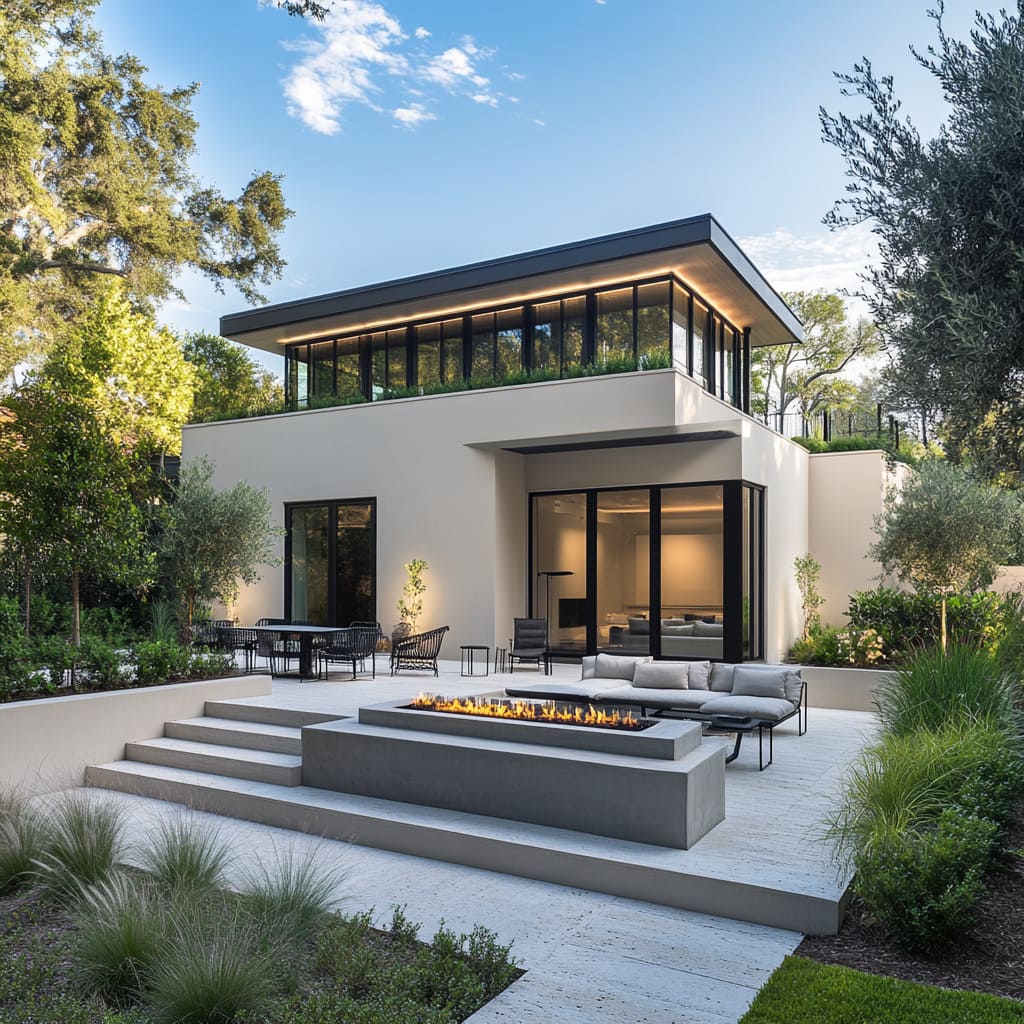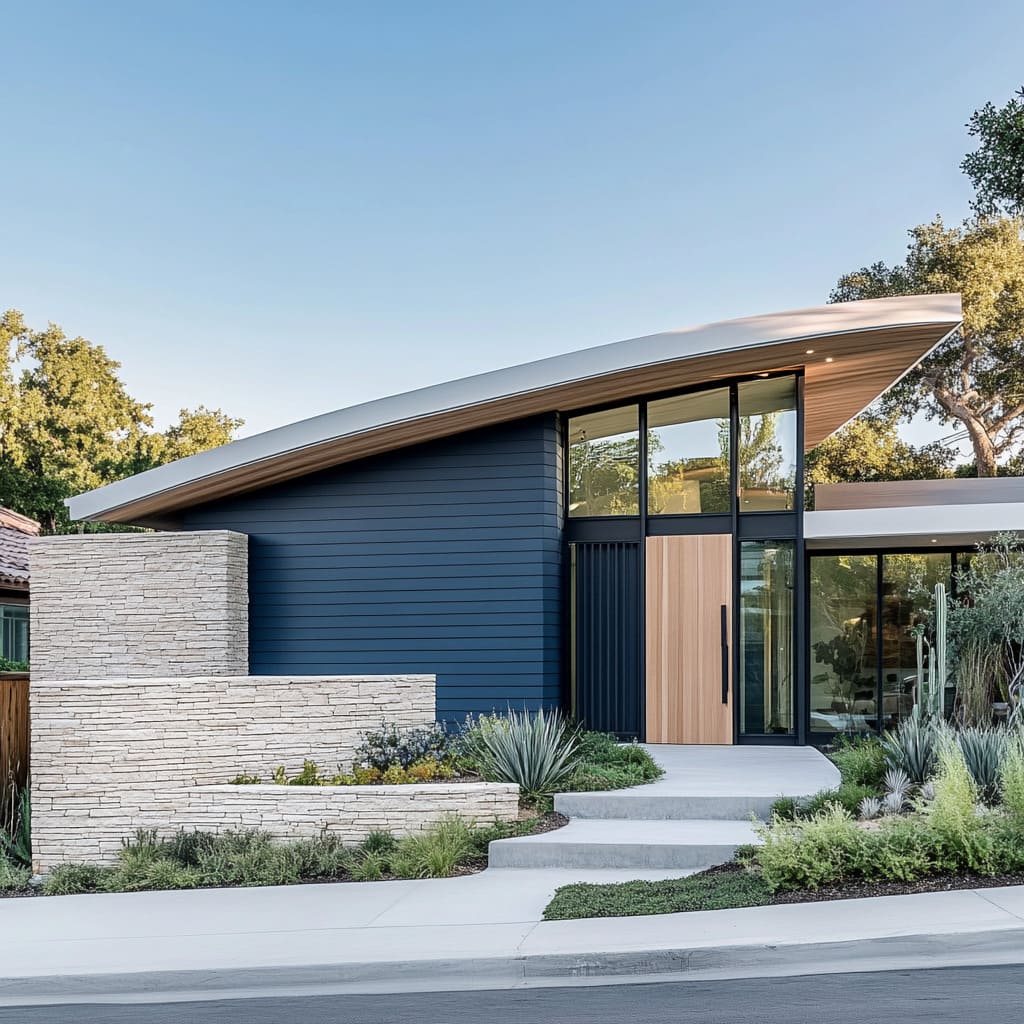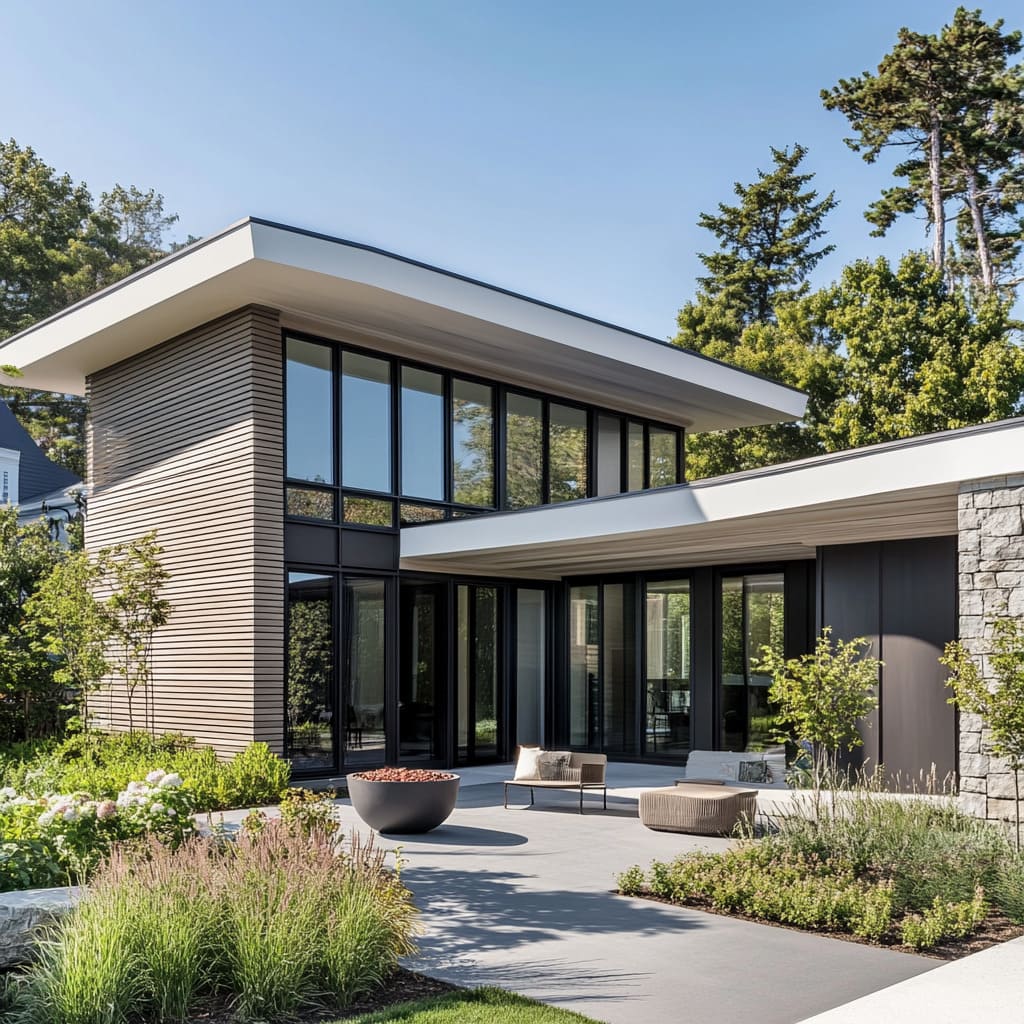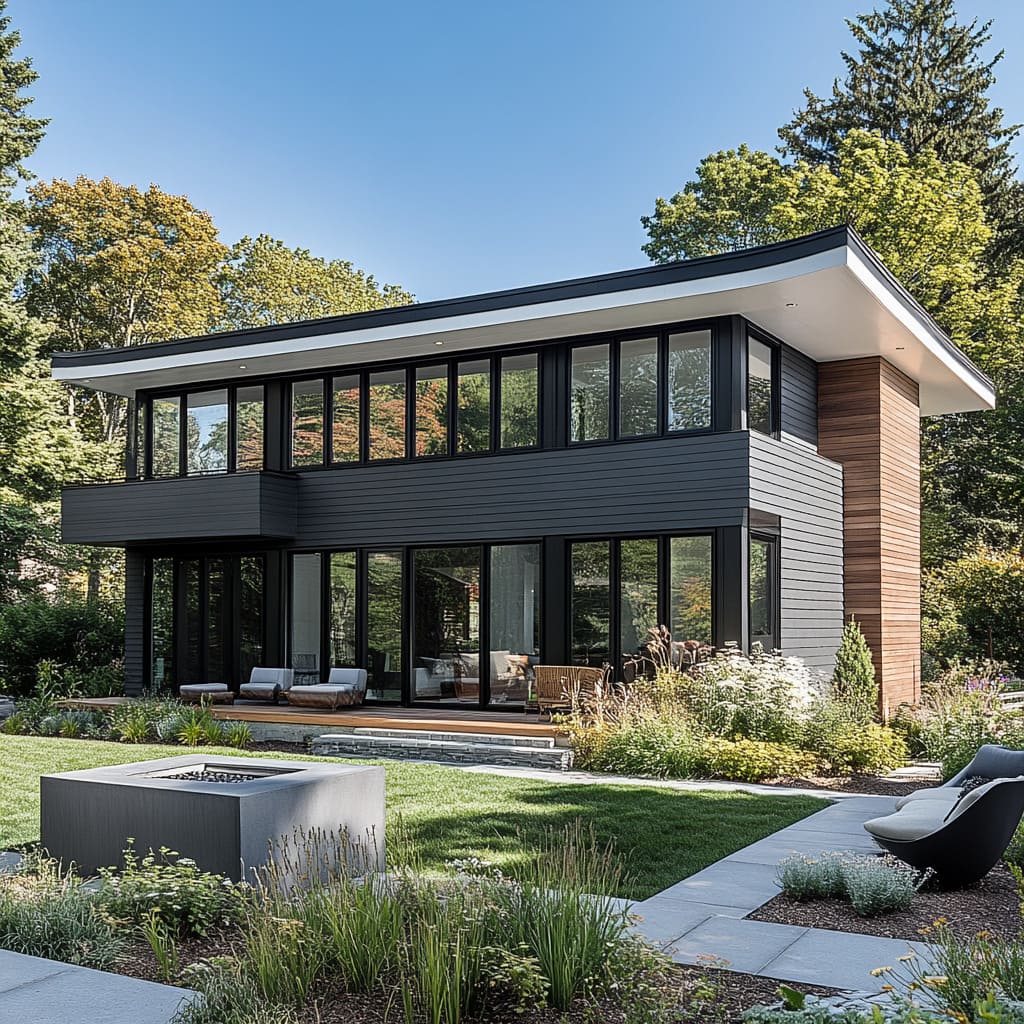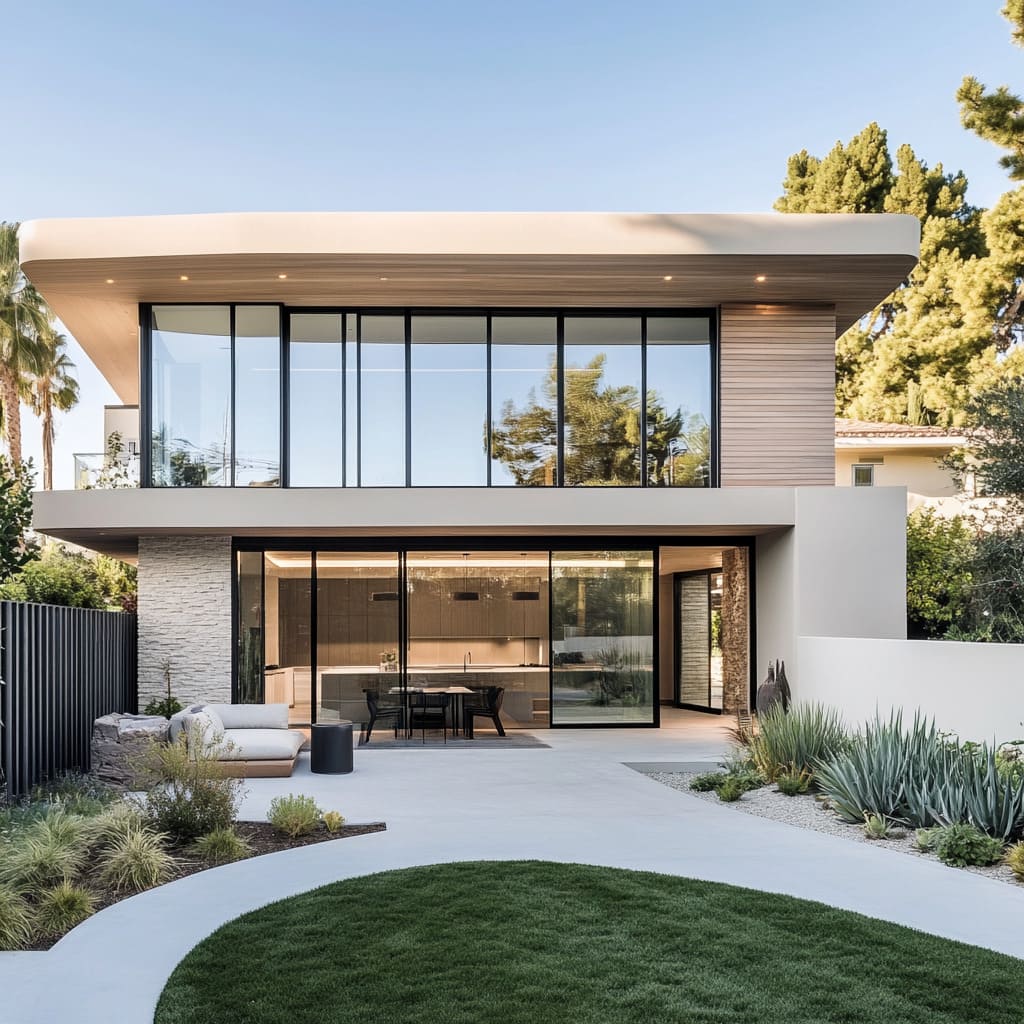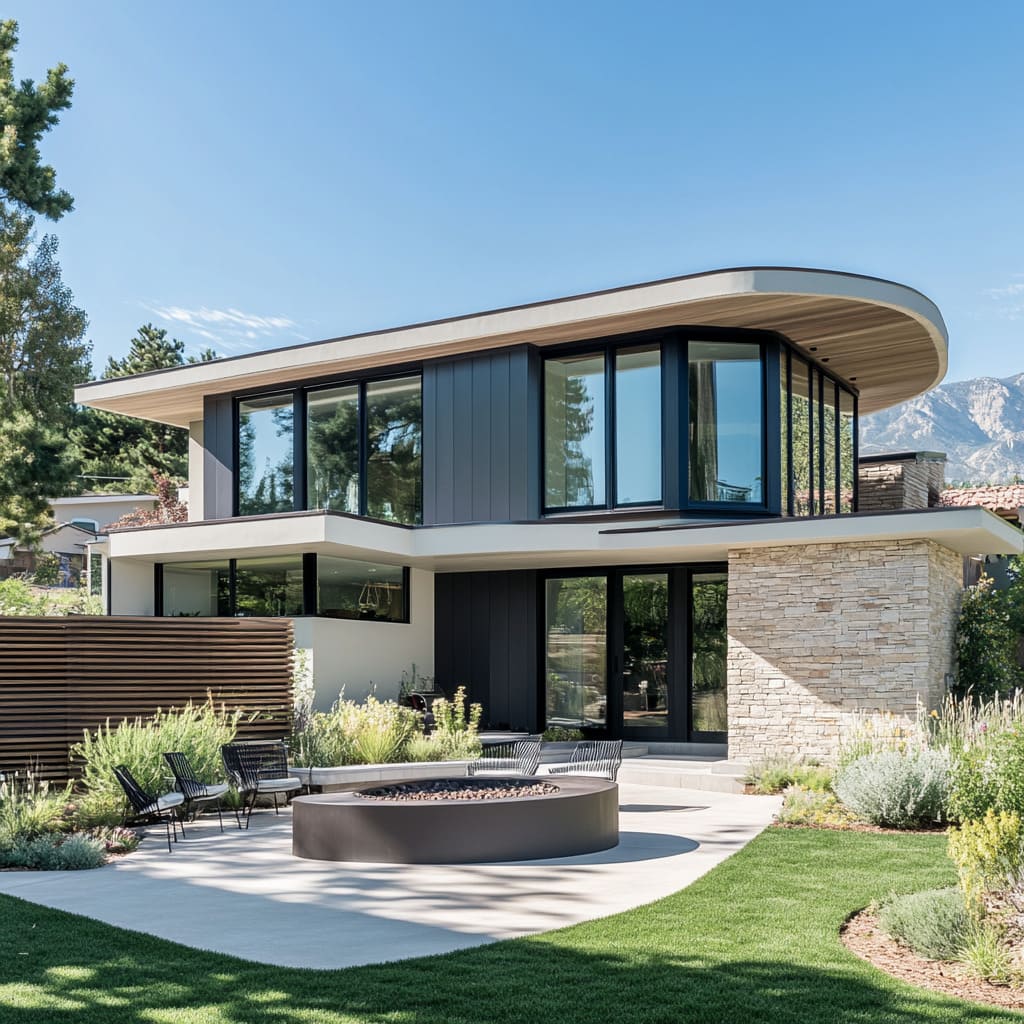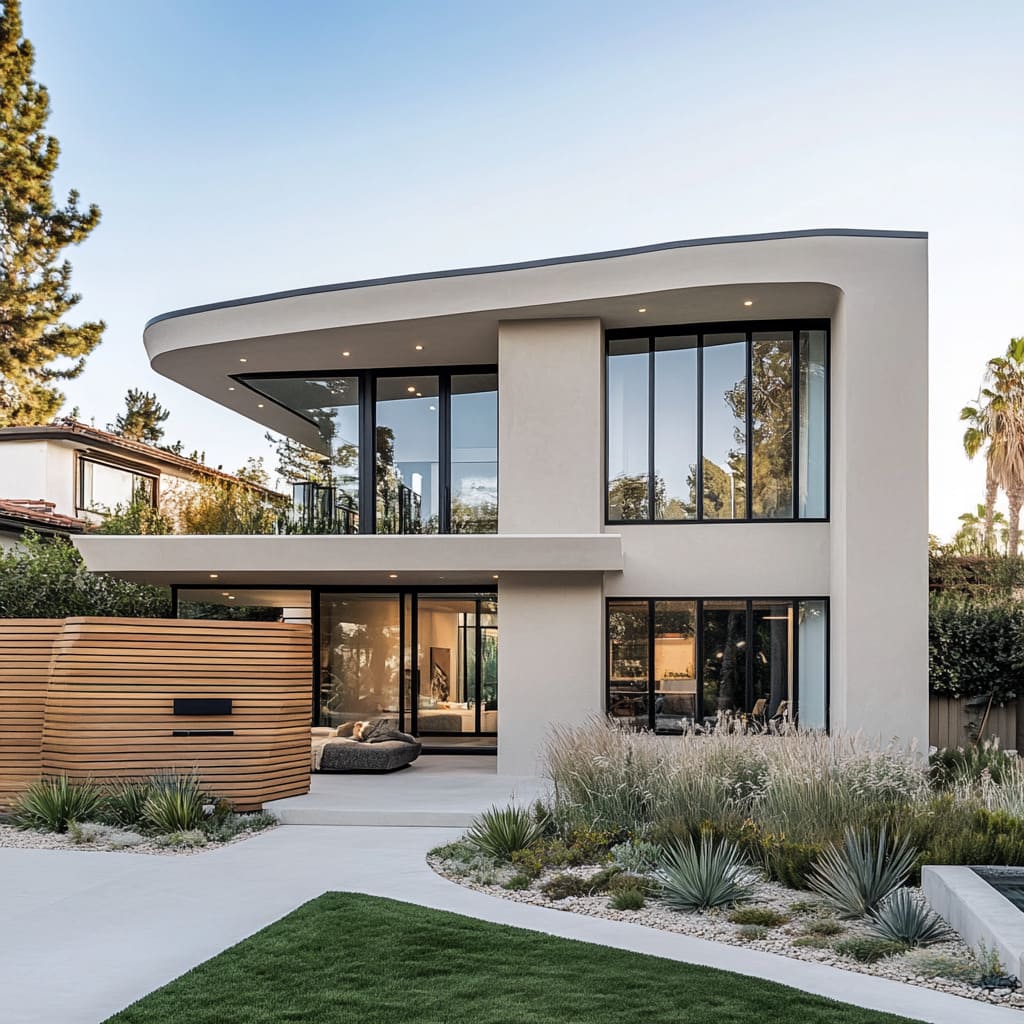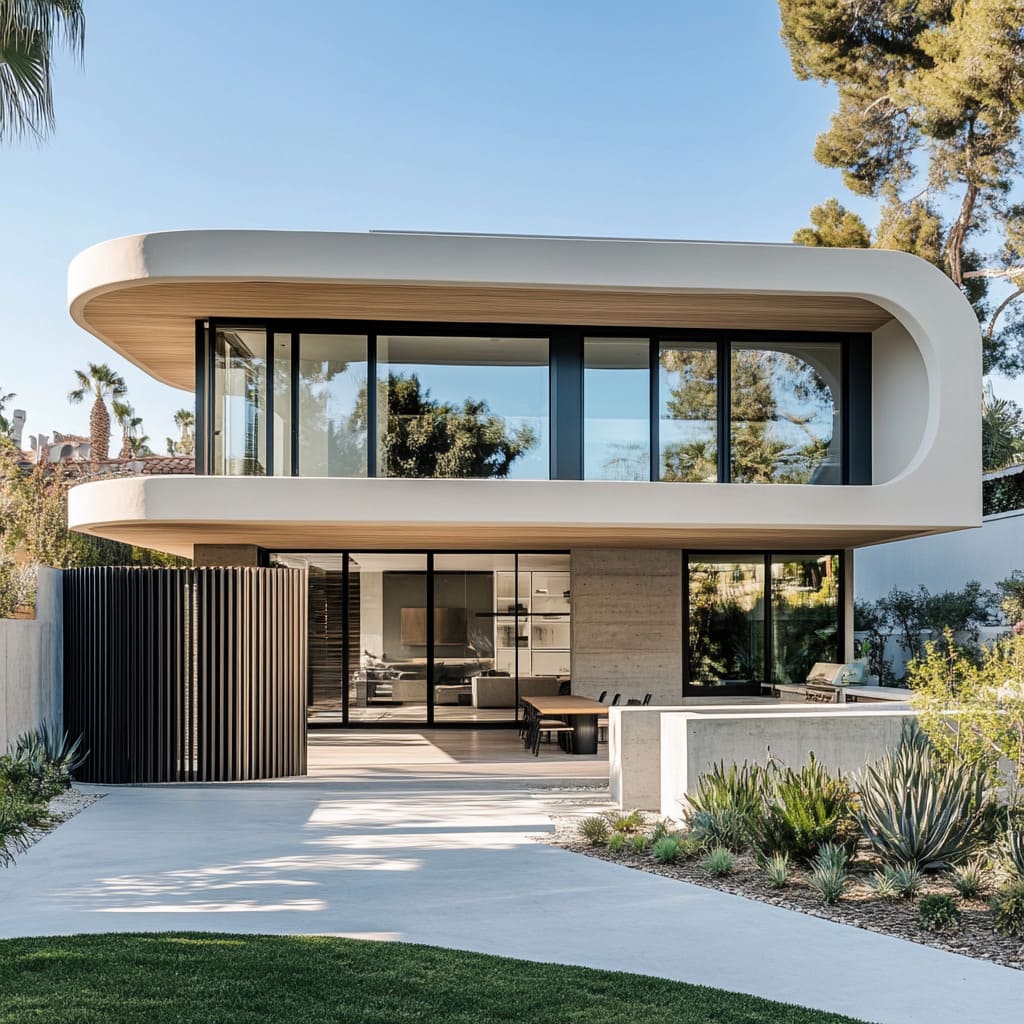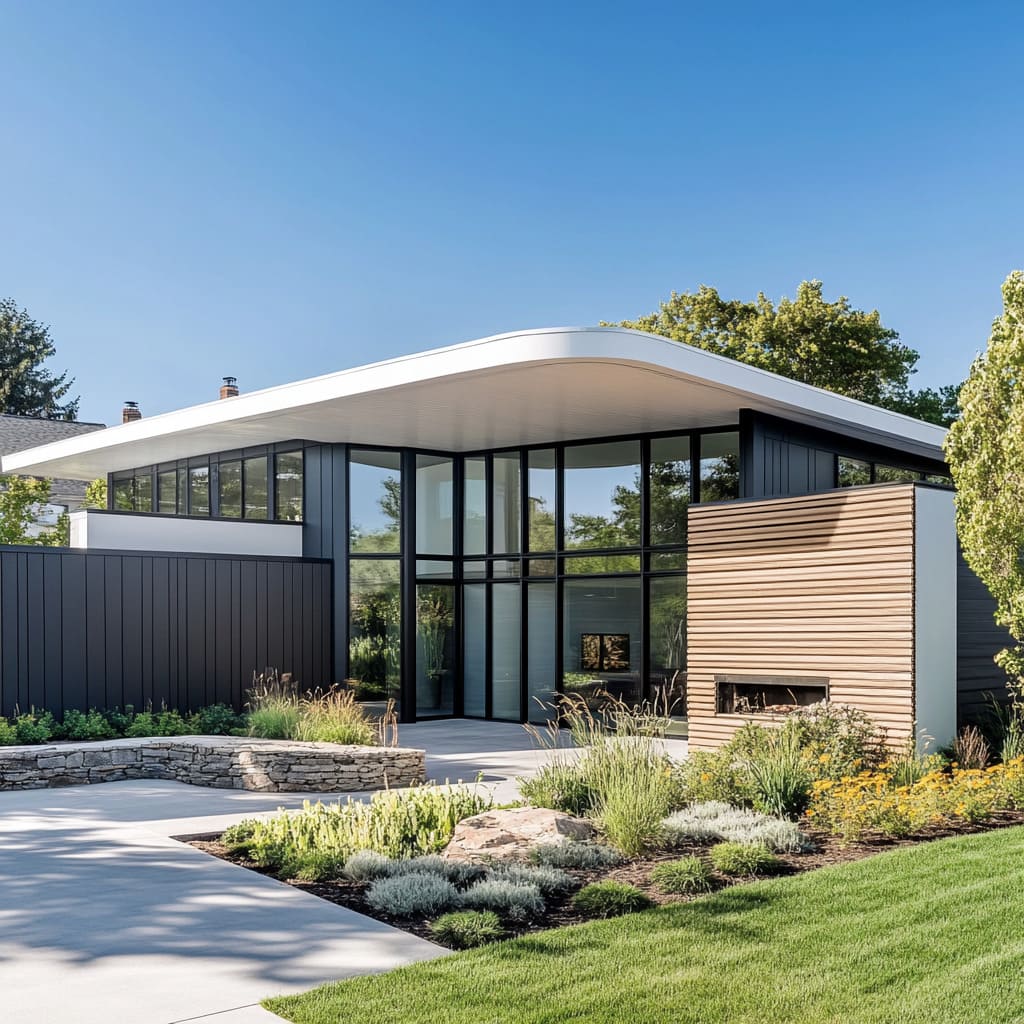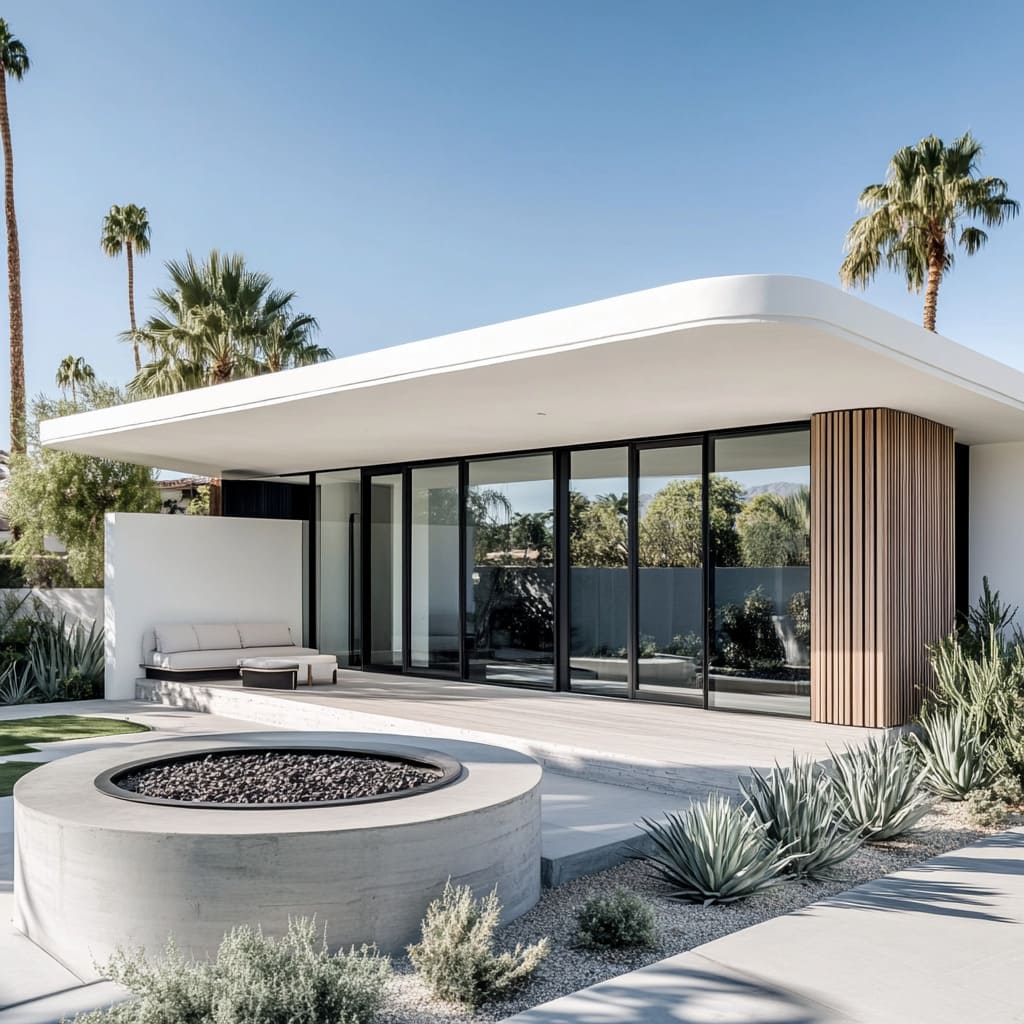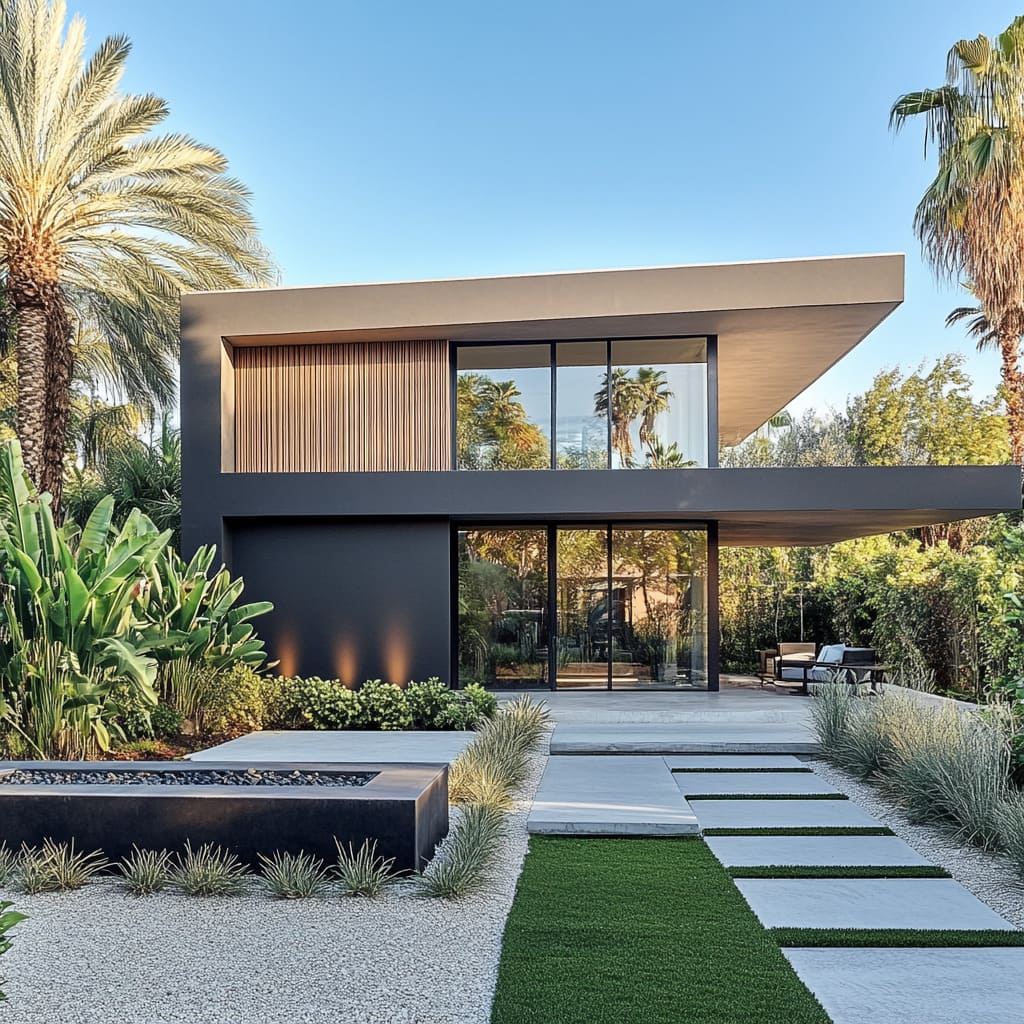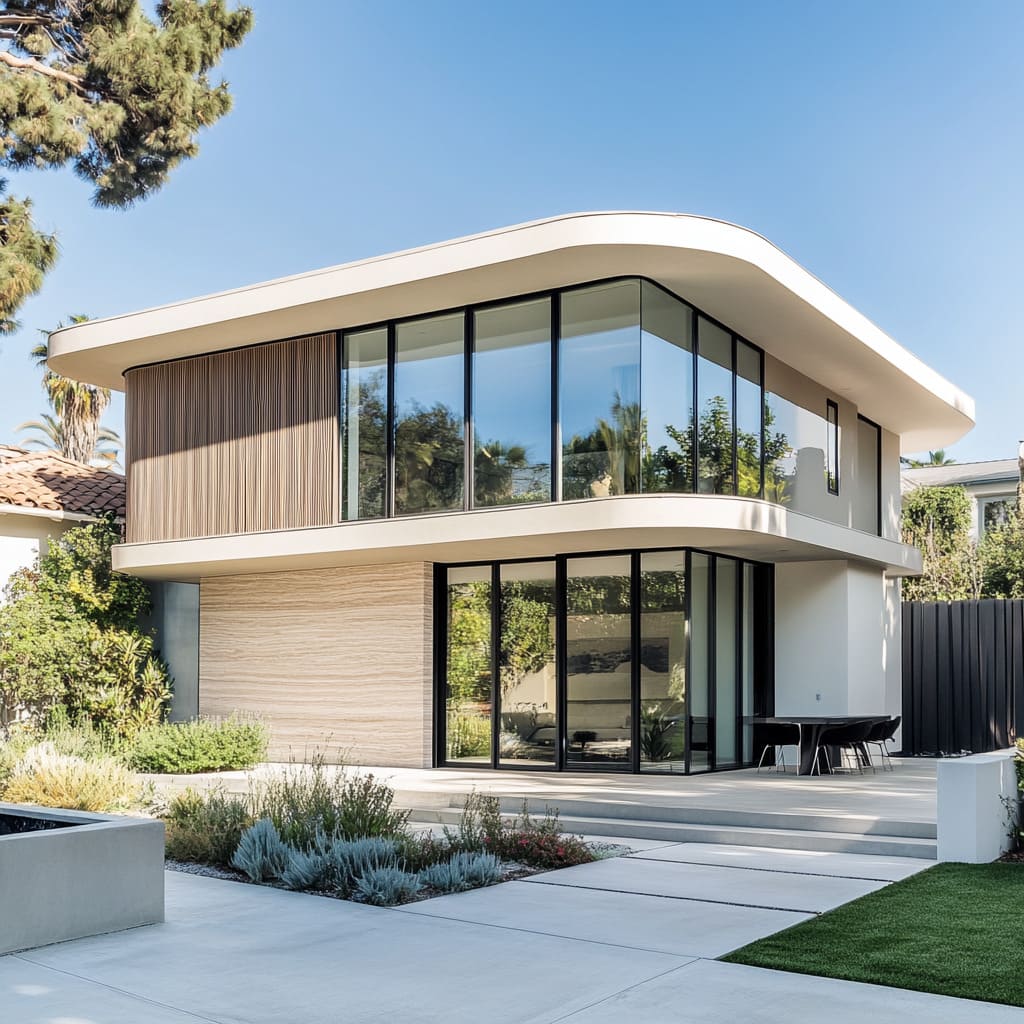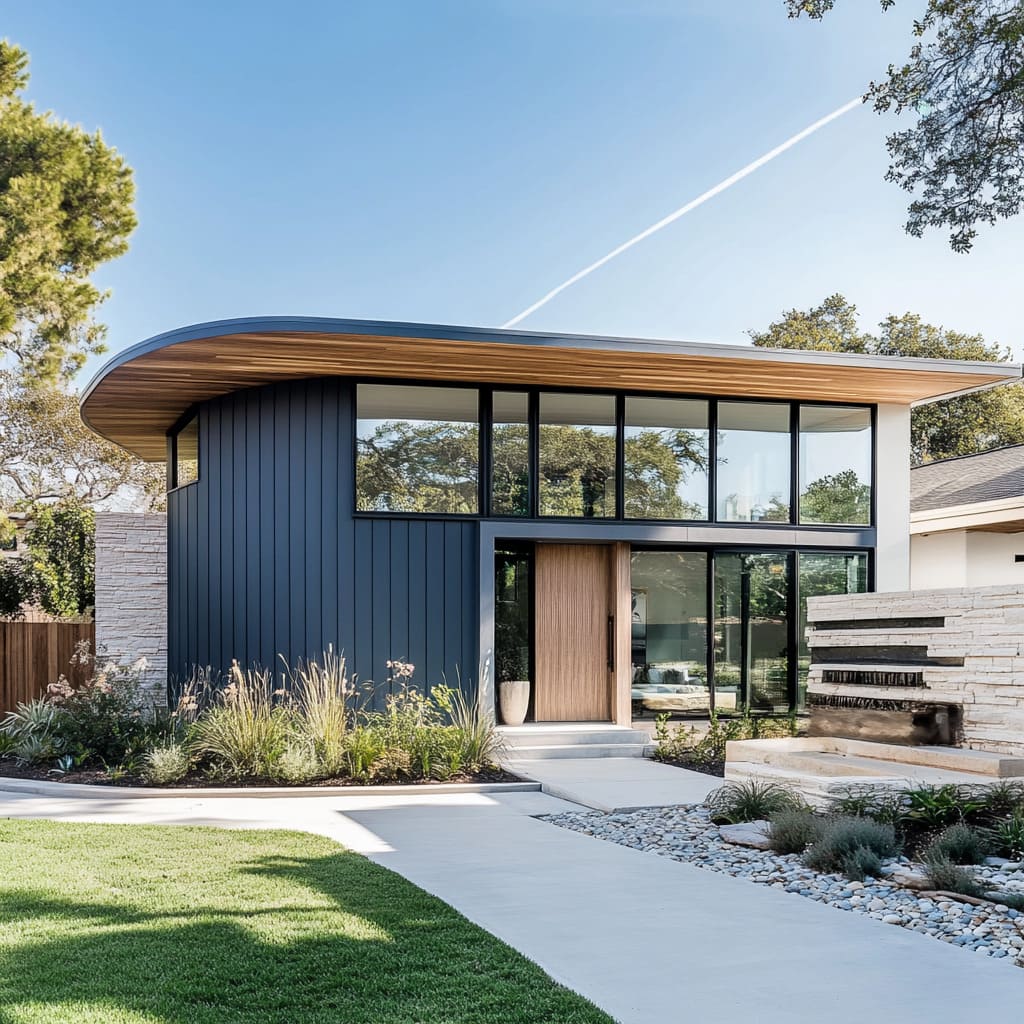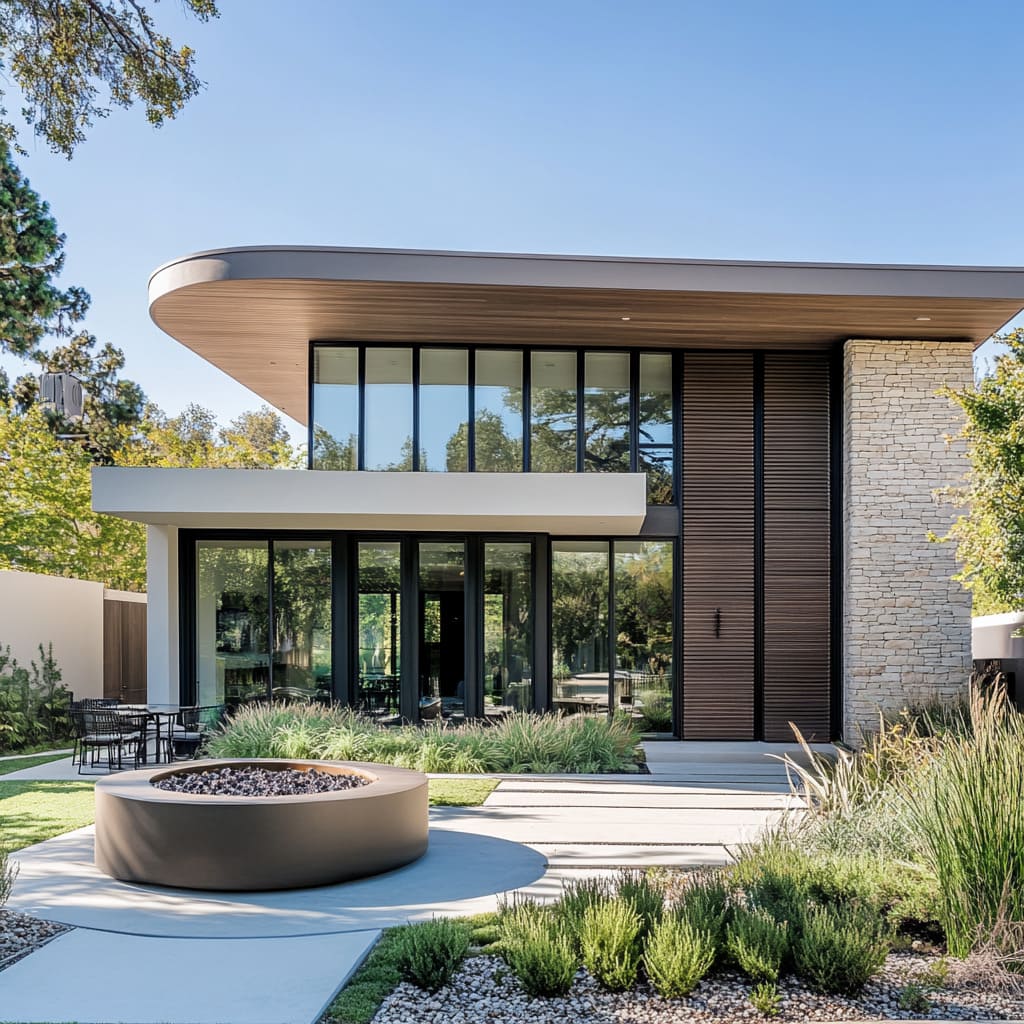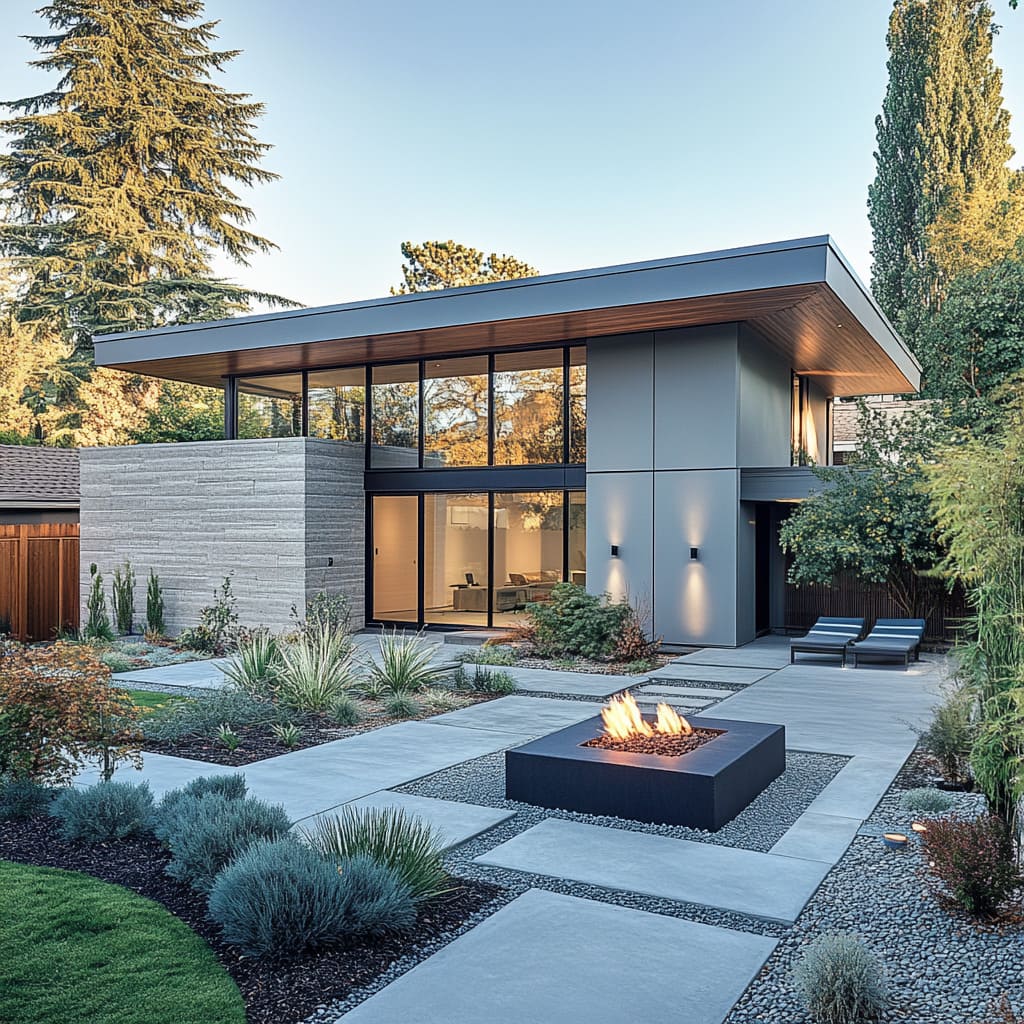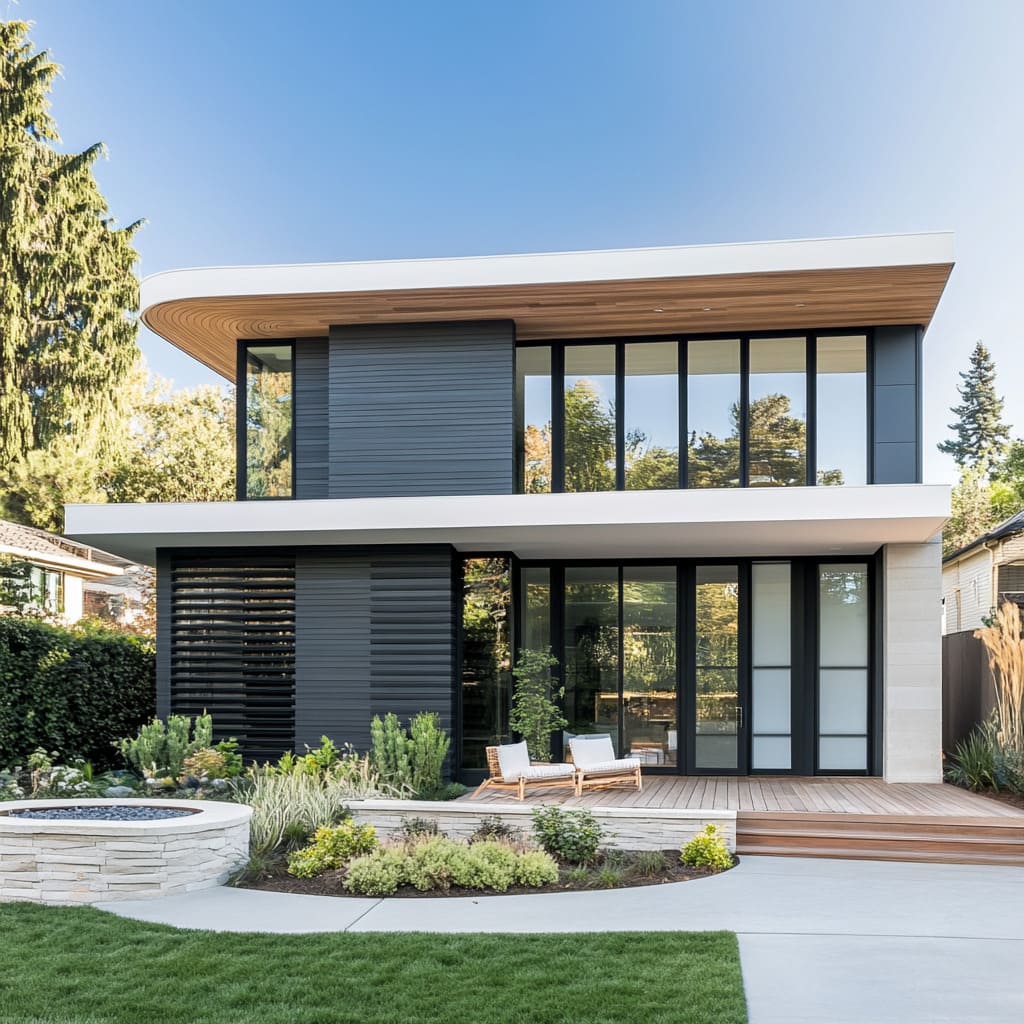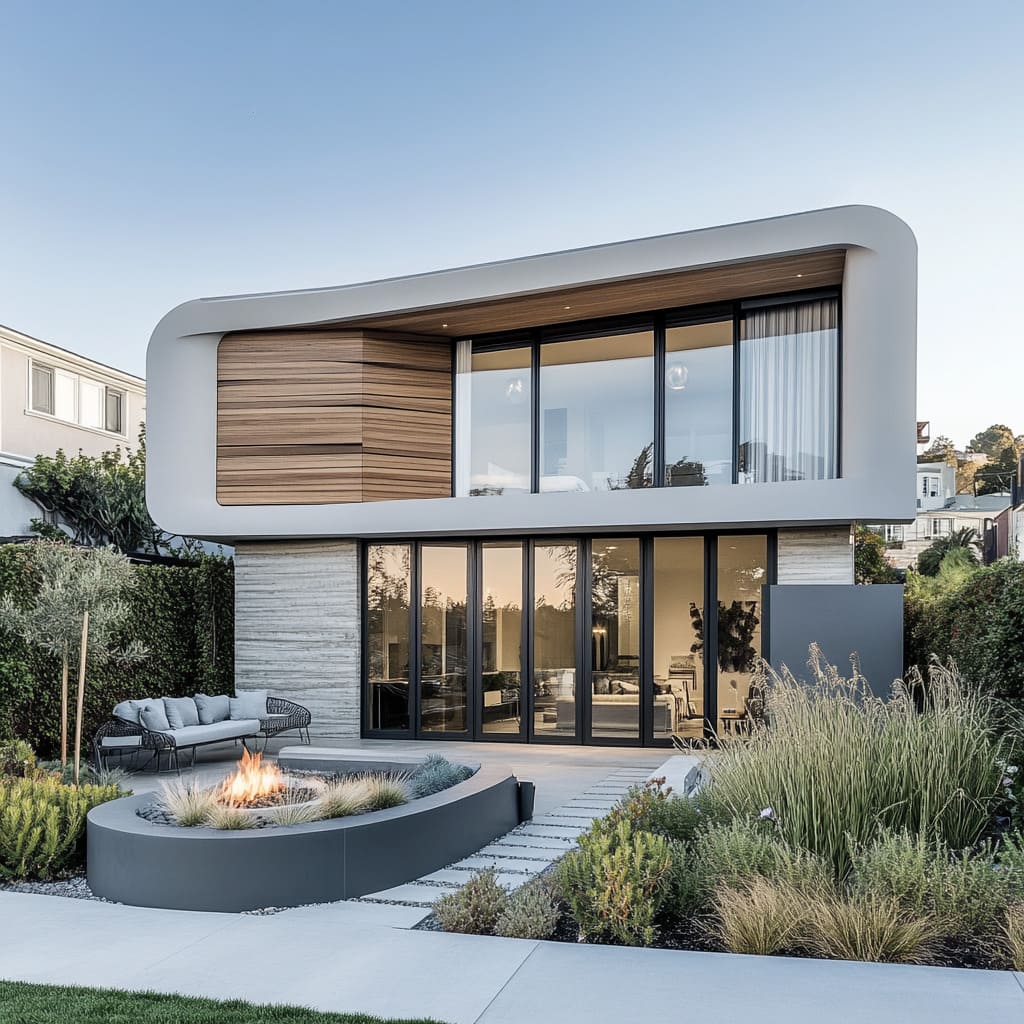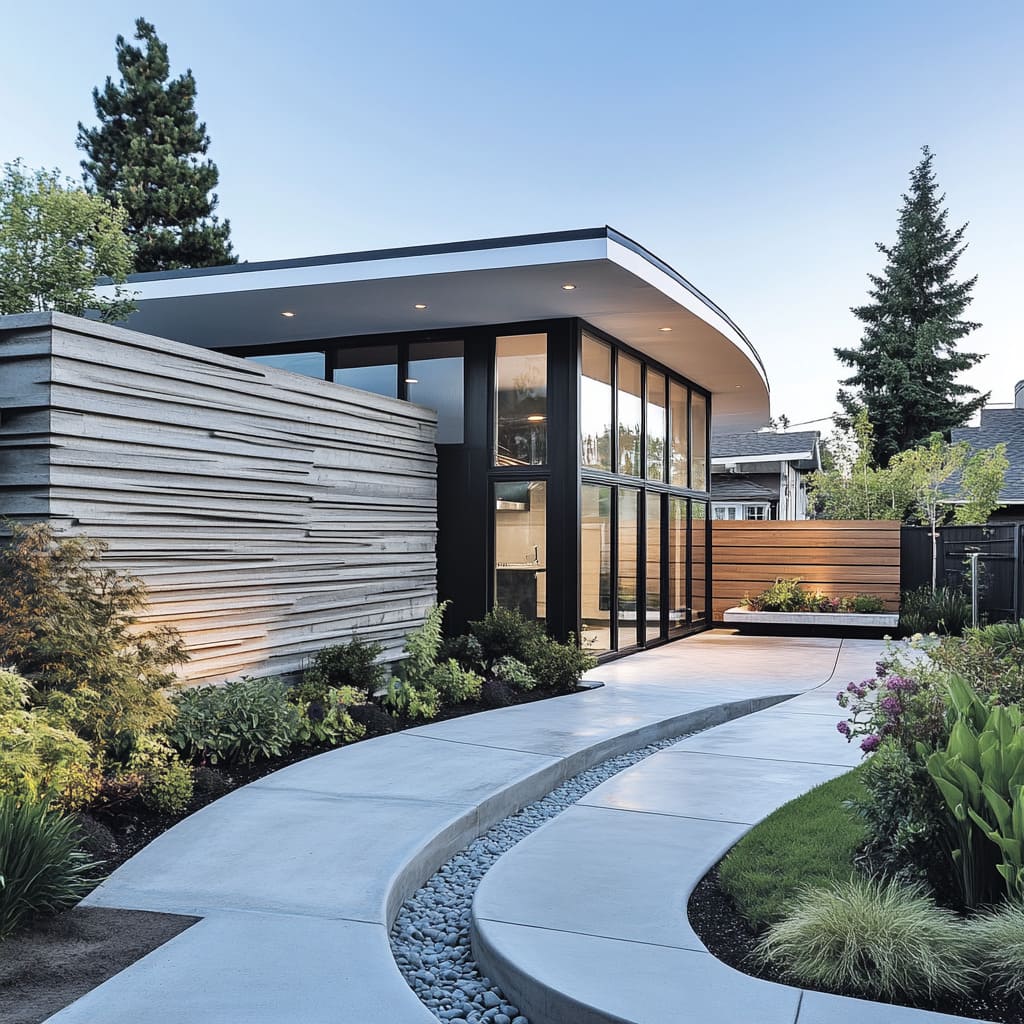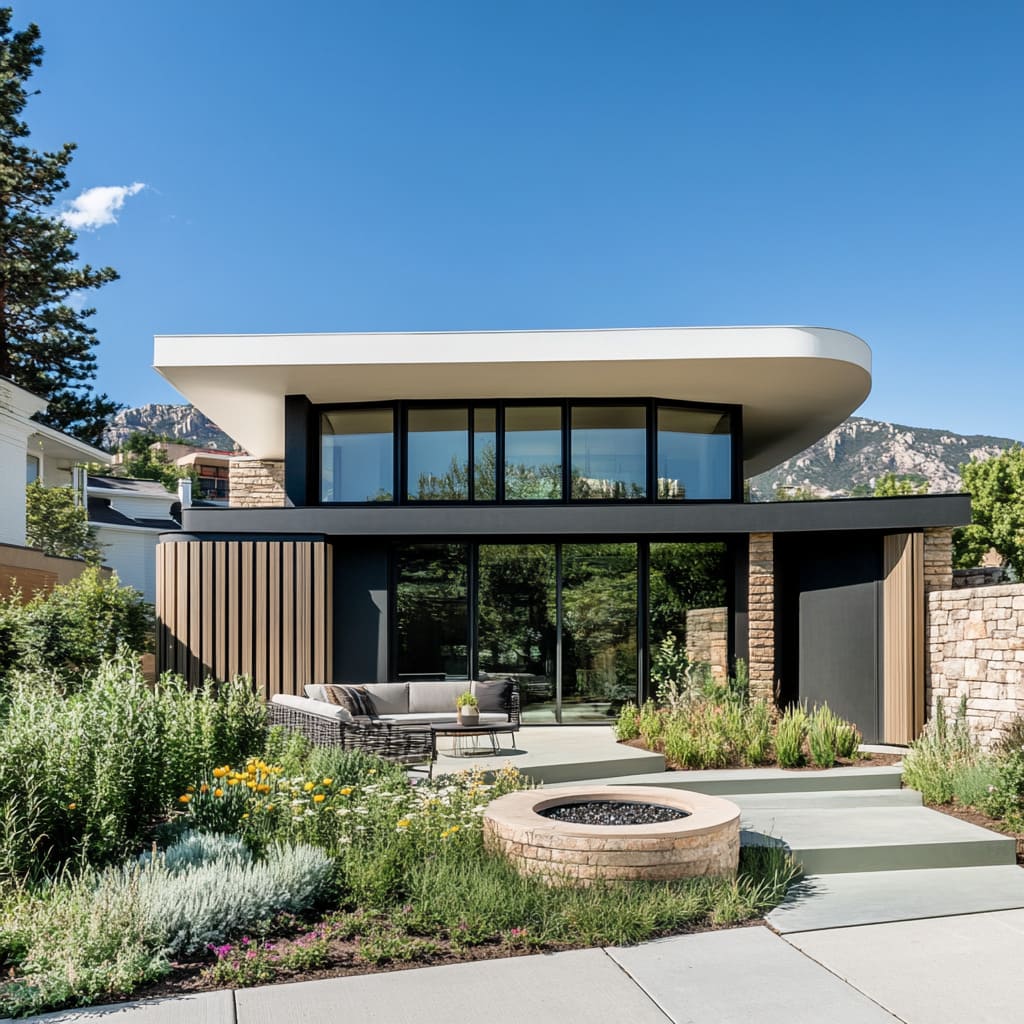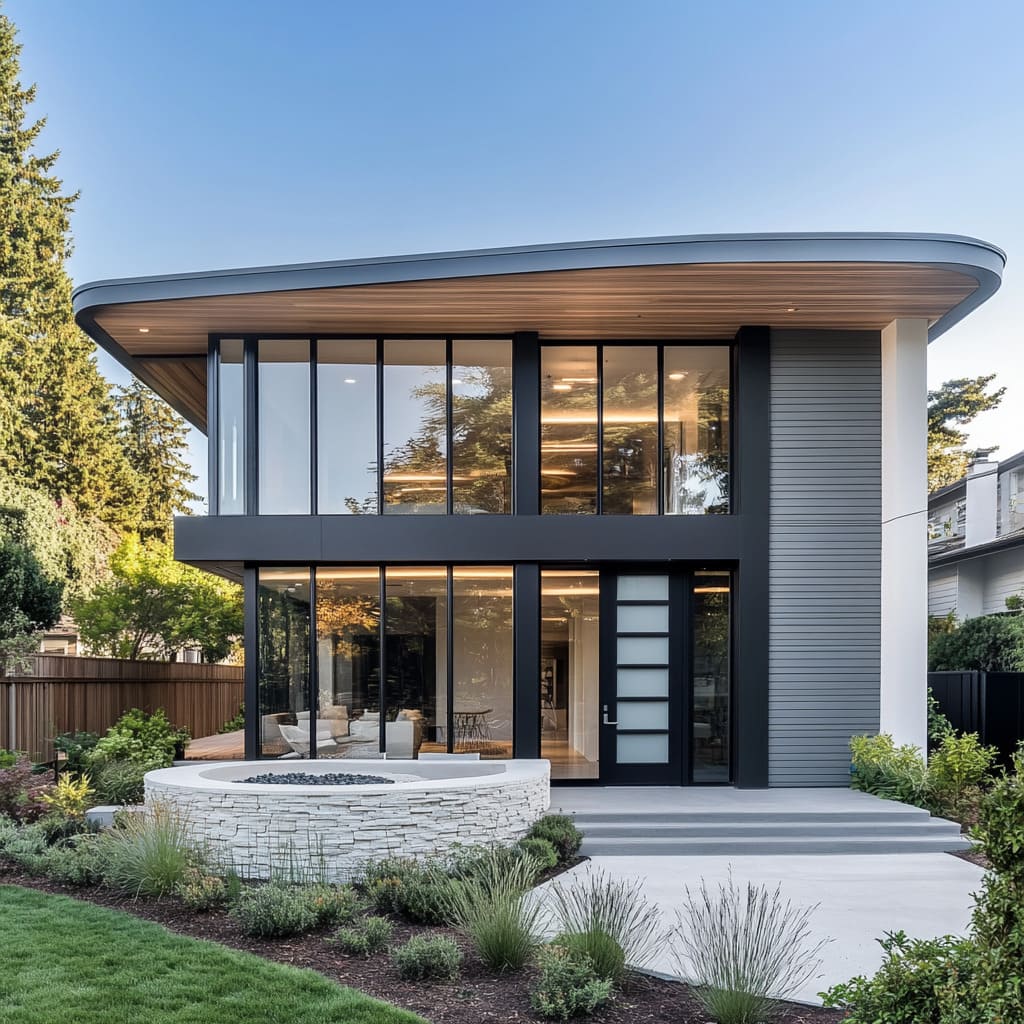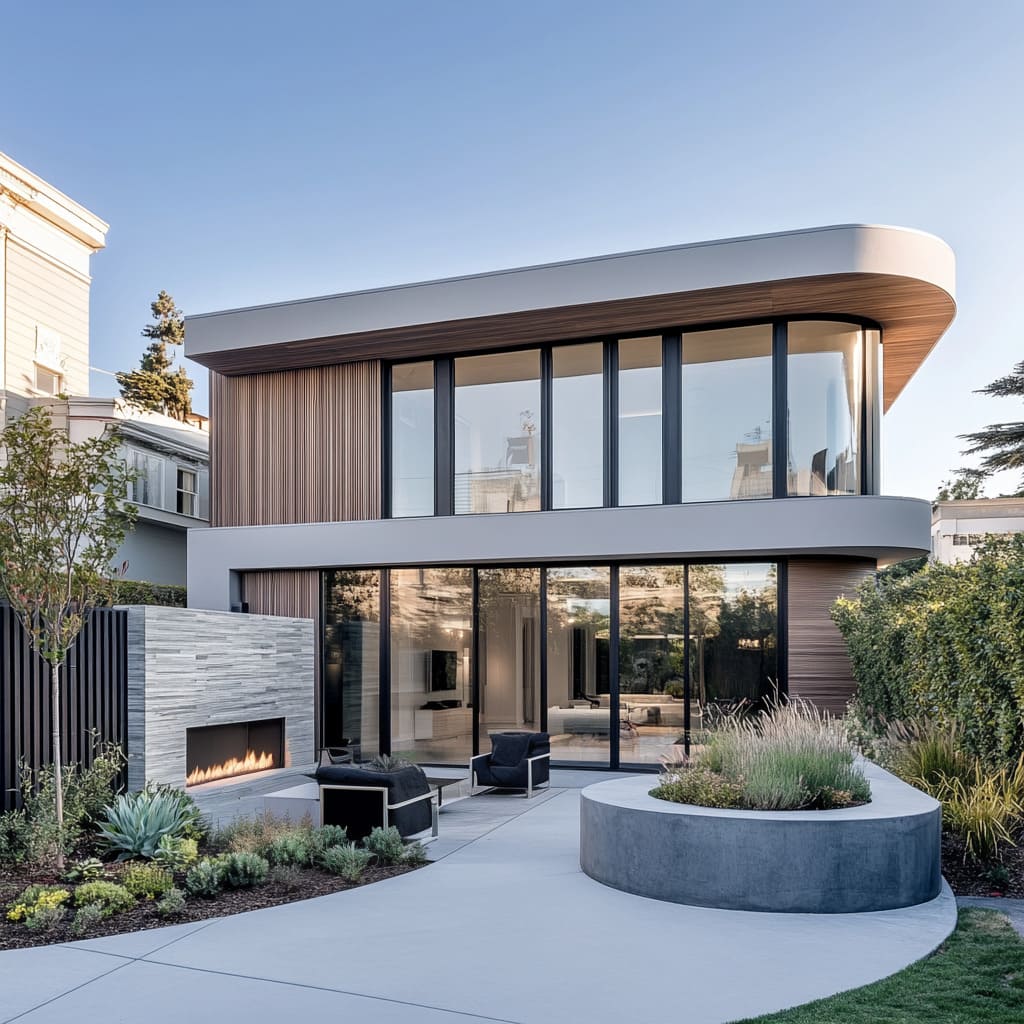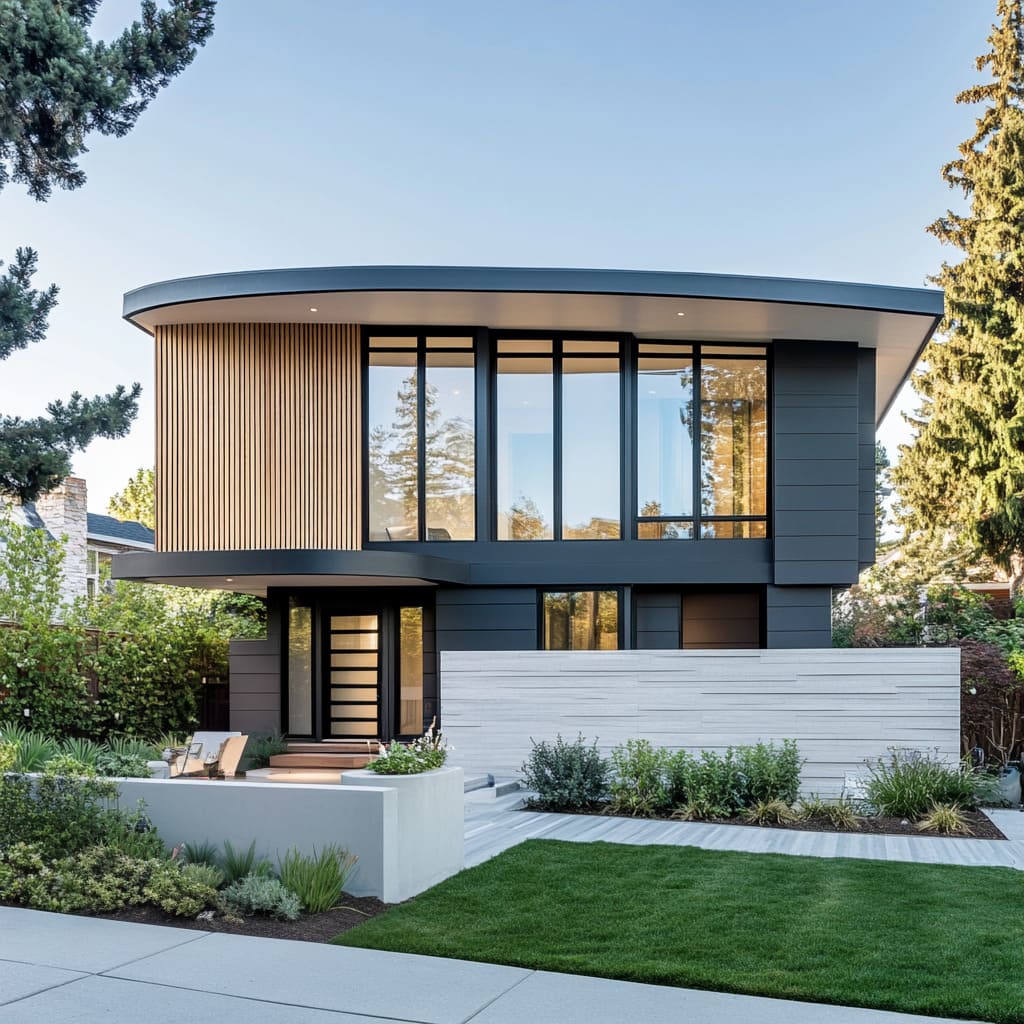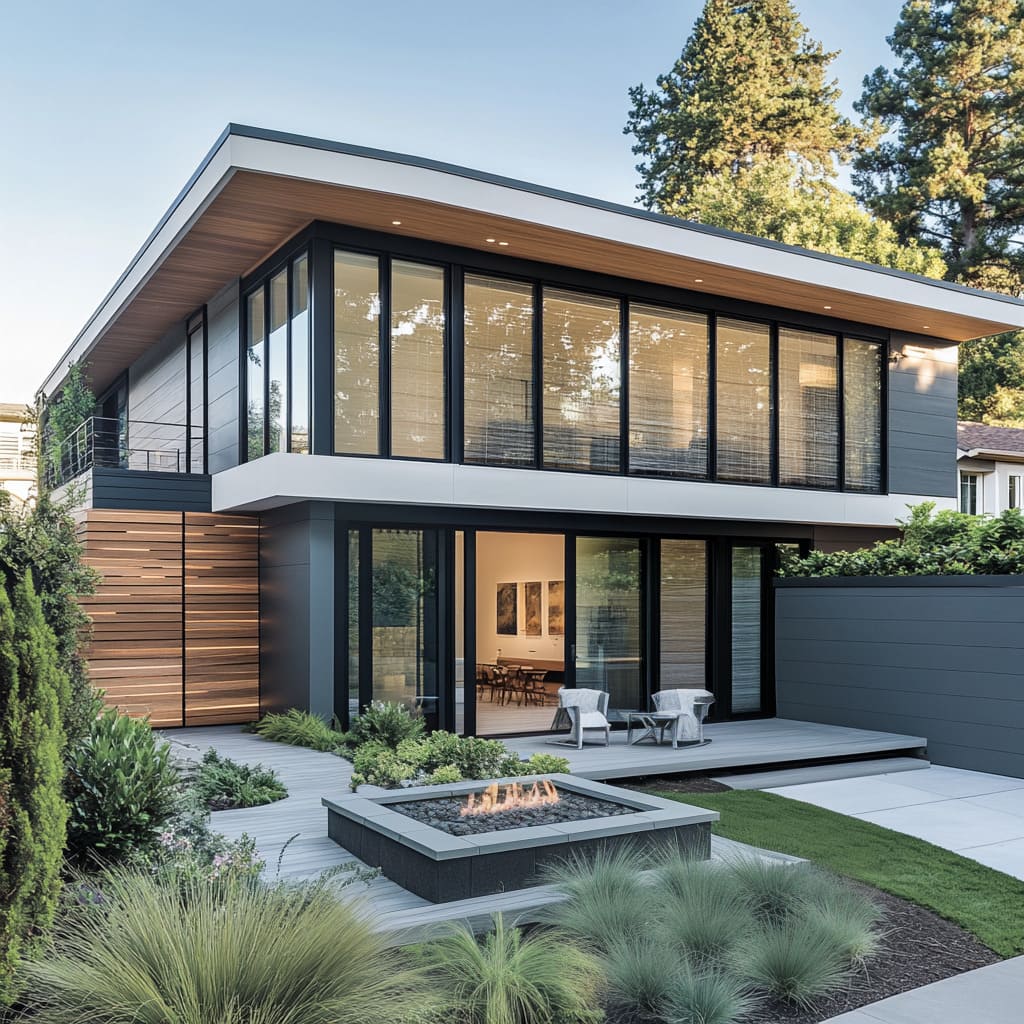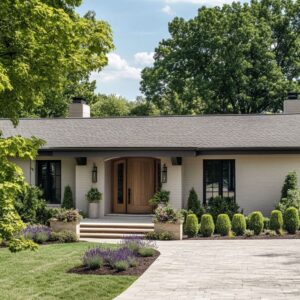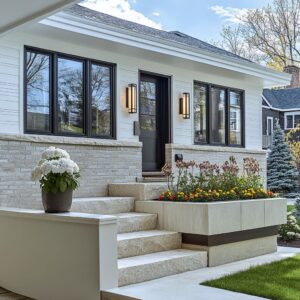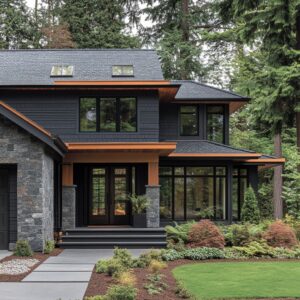Mid-century modern home design has an unmistakable charm that continues to capture the imagination of homeowners and designers alike. With its clean lines, clever use of materials, and emphasis on blending indoor and outdoor spaces, this style offers both timeless appeal and contemporary relevance.
Whether you’re inspired by the expansive glass windows, striking rooflines, or perfectly balanced landscaping, bringing this aesthetic to life can transform an ordinary home into something extraordinary. From subtle details to bold statements, the mid-century approach is as much about function as it is about form, making it a versatile choice for various settings and lifestyles.
Key Elements of Mid-Century Modern House Exterior
Mid-century modern home design stands out for its timeless aesthetic, blending simplicity with functionality while incorporating bold architectural statements. The style, often abbreviated as MCM, continues to inspire contemporary architects and homeowners with its clean lines, innovative use of materials, and seamless integration with the surrounding environment.
Architectural Features
A hallmark of MCM home exteriors is their distinctive rooflines, which are typically flat or slightly pitched. These low-slope designs not only contribute to the minimalist aesthetic but also enhance the home’s practicality by extending overhangs that provide shade and weather protection.
These rooflines emphasize horizontal lines, lending the house a grounded and balanced feel. Floor-to-ceiling glass windows are another defining feature.
These expansive panes invite natural light indoors and create a seamless visual connection between the interior and the outdoor surroundings. This transparency not only maximizes views but also reflects the era’s emphasis on blending architecture with nature.
Horizontal forms dominate the design language, achieved through the use of siding, wooden slats, and rectangular architectural elements. These clean, straight lines contribute to a sense of harmony and simplicity, eliminating any visual clutter.
Asymmetrical layouts add intrigue, with unevenly spaced windows, varying depths in the facade, and recessed or protruding sections creating depth and interest. Overhangs and cantilevers further emphasize this dynamic, visually extending the structure and adding a stylish modern touch.
Material Palette
The choice of materials plays a significant role in defining the character of mid-century modern home exteriors. Warm wood accents, often arranged vertically or horizontally, add texture and soften the overall look.
These natural elements contrast beautifully with lighter or darker shades of stucco, creating a striking yet inviting appearance. Natural stone, whether used for entire walls or as accents, provides a sense of permanence and ties the home to its surroundings.
Stacked stone walls and pillars add texture and timelessness, while a neutral color palette of whites, grays, blacks, and wood tones keeps the design understated yet striking. Modern materials like metal and glass are seamlessly incorporated to balance the organic warmth of wood and stone.
Metal is often used for window frames, privacy screens, or decorative slats, while extensive glass panes bring lightness and transparency.
Landscaping and Yard Design
The landscaping surrounding MCM home exteriors is as intentional as the architectural elements. A minimalist approach is taken, favoring native or drought-resistant plants like succulents, ornamental grasses, and low-maintenance shrubs.
These plants thrive in various climates while enhancing the design’s simplicity. Hardscape features, such as concrete pathways and gravel beds, are structured and clean-lined, echoing the geometric forms of the house.
Fire pits integrated into built-in seating areas often serve as focal points for social gatherings, extending the living space outdoors. The landscape often features contrasts in texture, with soft grasses and spiky succulents juxtaposed against the smoothness of gravel or the roughness of stone.
These layers of texture add depth while maintaining a cohesive look.
Notable Features
Some additional features set MCM exteriors apart. Privacy screens, typically crafted from vertical wood or metal slats, provide seclusion while enhancing the facade’s composition.
For multi-level homes, rooftop gardens or terraces blend greenery into the structure itself, serving as relaxing outdoor retreats and adding visual interest. Lighting plays an understated yet crucial role.
Warm, subtle outdoor lighting highlights key architectural and landscaping features, enhancing the ambiance without overpowering the design. Remodeling your home to embrace mid-century modern principles requires careful attention to these elements.
The result is a home that exudes style, integrates seamlessly with its surroundings, and stands the test of time as a modern classic.
Design Principles for Remodeling a House
Remodeling your home with a mid-century modern influence requires a thoughtful approach that prioritizes simplicity, functionality, and a seamless integration with the outdoors. This iconic design style, known for its timeless appeal, emphasizes clean aesthetics and purposeful design choices, making it a perfect inspiration for those looking to update their home’s exterior and yard.
Simplicity and Functionality
The foundation of mid-century modern design lies in its uncluttered forms and functionality-driven elements. Begin by eliminating unnecessary decorative features that clutter the facade.
Simplicity is key, with every component serving a clear purpose. For instance, focus on streamlined designs such as smooth stucco walls, understated color palettes, and geometric shapes.
Outdoor spaces should feel like an extension of the home, emphasizing usability. Consider transitions such as wide sliding glass doors or patios that connect directly to interior living spaces.
These seamless transitions create a natural flow, making outdoor areas feel like a natural continuation of indoor living.
Indoor-Outdoor Connection
Blurring the boundaries between indoor and outdoor spaces is a signature characteristic of mid-century modern architecture. Install expansive floor-to-ceiling windows or large sliding glass doors that invite natural light into the home while offering unobstructed views of the surrounding landscape.
These features create an airy, open atmosphere that brings nature inside. To enhance this connection, use similar materials both indoors and outdoors.
For instance, wood or stone elements can be extended from the interior to the exterior facade, creating a cohesive and harmonious look. This technique strengthens the visual flow and makes the entire property feel unified.
Material Contrast
Achieving balance between warmth and sophistication is essential for a mid-century modern remodel. A carefully chosen mix of natural and modern materials is key.
Incorporate warm wood elements, such as vertical or horizontal slats, alongside sleek materials like glass and metal. This contrast adds depth to the facade, balancing organic textures with polished finishes.
Experiment with tonal contrasts to add visual interest. Dark wooden panels can pop against a backdrop of light stucco walls, while black steel-framed windows provide a striking accent.
These combinations highlight the house’s design features without overwhelming the overall simplicity.
Integrated Landscaping
Landscaping plays a pivotal role in enhancing the aesthetic of mid-century modern home exteriors. The yard should feel structured and minimalistic, avoiding excess ornamentation.
Use geometric pathways made from concrete slabs, complemented by gravel beds for texture. These clean lines echo the architectural principles of the house itself.
Introduce focal points to anchor the outdoor space. A central fire pit or water feature serves as both a visual centerpiece and a functional gathering area.
Plant selections should focus on drought-tolerant or native species such as succulents, ornamental grasses, and shrubs, which provide texture and depth without overwhelming the design.
Creative Ideas for Remodeling
To bring mid-century modern house ideas to life, focus on details that redefine the character of the home while staying true to the principles of the style.
- Roof Design: Replace traditional pitched roofs with flat or low-sloped designs. Add overhangs that emphasize horizontal lines and provide shade, or consider cantilevered sections for a striking, modern statement.
- Facade Transformation: Modernize the facade with vertical wood slats as accents, adding texture and warmth. Replace smaller, outdated windows with large panes of glass framed in dark steel or aluminum to maximize natural light and improve curb appeal.
- Material Updates: Refinish the exterior walls with smooth stucco in neutral tones like taupe or gray to create a sleek, timeless appearance. Integrate natural stone features, such as a stacked stone wall or a column, to add an earthy, grounded element.
- Yard Features: Design outdoor spaces that complement the architecture. Geometric patios made of concrete slabs can be bordered with clean gravel beds, while built-in seating around a fire pit offers both style and functionality. Frame the house with low-maintenance plants like sculptural succulents and ornamental grasses to enhance the structured look.
Additional Details
Small details can make a significant difference in creating a mid-century modern split-level exterior. Introduce privacy screens using vertical wooden or metal slats to provide seclusion without compromising the minimalist aesthetic.
For a striking entrance, replace traditional doors with sleek pivot or wood designs that feature glass inserts, adding a contemporary edge. By focusing on these principles, your remodeled home can embody the sophistication and charm of mid-century modern design while incorporating contemporary touches.
Thoughtful updates to the facade, landscaping, and outdoor spaces can transform a standard house into a standout example of this timeless style.
Unique Elements for Enhancing House Design
Modern mid-century-inspired homes have an enduring charm that goes beyond their minimalist aesthetic. By integrating thoughtful design choices, these homes strike a balance between functional innovation and timeless beauty.
To stand out, certain additional elements and principles can be incorporated to elevate the home’s visual and practical appeal.
Integrated Privacy and Transparency
A hallmark of mid-century modern exterior design is its ability to balance openness with privacy. Vertical slats, often crafted from natural wood or metal, serve as stylish privacy screens while allowing light to filter through and maintaining a sense of openness.
Similarly, recessed sections of the facade create private areas, shielding interiors from direct exposure while adding depth to the design. This interplay of transparency and seclusion ensures that the house is both welcoming and functional, blending public and private spaces seamlessly.
Sliding glass doors and floor-to-ceiling windows extend this philosophy by offering clear views of the outdoor areas without sacrificing comfort. Thoughtfully placed landscaping further complements this approach, with taller greenery used to shield certain views while still allowing an airy, open feel in other spaces.
Floating Levels and Overhangs
Adding floating levels or cantilevered upper stories introduces a layer of sophistication to any home. This design choice creates the illusion that parts of the structure are weightless, adding an architectural flair that is both striking and practical.
Overhangs, a signature of mid-century modern homes, not only contribute to this sense of weightlessness but also serve functional purposes by providing shade and protection from the elements.
To amplify the modern aesthetic, consider using contrasting materials for the floating levels, such as dark steel supports paired with light wood or smooth stucco. This contrast accentuates the design while ensuring structural integrity.
Floating decks or patios, when paired with similar overhangs, extend the concept to outdoor spaces, creating a harmonious balance between the house and its environment.
Functional Focal Points
Outdoor living spaces in mid-century-inspired homes often feature carefully designed focal points that combine beauty with usability. Fire pits, for example, serve as gathering areas that invite interaction while adding a sculptural quality to the yard.
Built-in seating, typically crafted from materials that echo the house’s facade, such as wood or stone, integrates these focal points seamlessly into the overall design.
Functional elements like these are not mere decorative additions; they enhance the usability of outdoor areas, making them more inviting for daily use or entertaining. These features align with the mid-century philosophy of blending functionality with aesthetics, ensuring that every part of the home contributes to a cohesive, purposeful design.
Subtle Layers in Landscaping
Landscaping for mid-century modern homes emphasizes simplicity, but this doesn’t mean sacrificing depth or interest. Strategic layering of plants with varying heights, colors, and textures creates a dynamic but uncluttered yard.
For instance, soft ornamental grasses can be paired with sculptural succulents or spiky agaves to create a striking contrast. This layered approach draws the eye without overwhelming the overall design.
Clean-edged concrete or gravel pathways further enhance the landscaping, guiding visitors through the yard while maintaining a structured look. These hardscape elements are often framed by low-maintenance greenery, ensuring the yard remains visually appealing and easy to care for.
The combination of soft organic elements and sharp geometric forms echoes the architectural lines of the home itself.
Roofline Drama
The roofline is often overlooked, but it plays a critical role in defining the character of a house. Subtle curves or sharp, angular rooflines can introduce a sense of modernity without disrupting the simplicity that mid-century designs are known for.
Overhanging roofs, in particular, emphasize horizontal lines while adding a sense of protection and shade.
To create a standout look, consider incorporating contrasting materials into the roofline, such as warm wood soffits paired with sleek metal edges. This detail draws attention to the roof without overwhelming the design.
If feasible, cantilevered roof sections add drama by appearing to defy gravity, reinforcing the home’s modern aesthetic.
By integrating these principles, a home can embrace the timeless appeal of mid-century modern style while incorporating contemporary innovations. From floating structures and privacy screens to layered landscaping and bold rooflines, every element contributes to a design that is as functional as it is visually striking.
Whether remodeling an existing home or starting from scratch, these ideas provide a framework for creating a truly unique and engaging space.
Conclusion
Creating a mid-century modern-inspired home is about more than just replicating a look—it’s about embracing the principles of simplicity, functionality, and harmony with the environment. By incorporating thoughtful design elements, such as clean rooflines, seamless indoor-outdoor connections, and curated landscaping, you can craft a home that feels both modern and rooted in a rich design tradition.
Whether you’re reimagining your current space or starting fresh, this style provides endless opportunities to highlight your home’s unique character while enhancing its overall appeal. Let these ideas inspire you to make timeless design a part of your everyday living.
